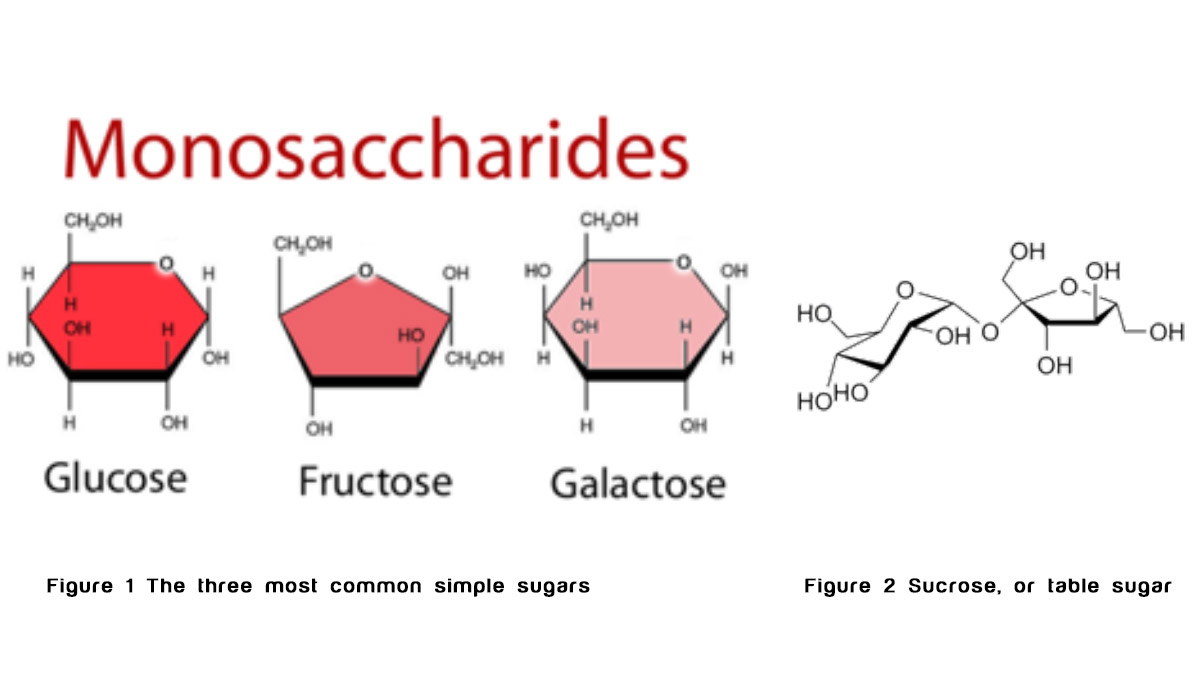
Hello,
Recently we spoke about metabolism, and I described its most general aspects in a brief video. I think that now it's time to go over macronutrients in greater detail. We will start carbohydrates for several reasons - they are ubiquitous, they are in the bottom of the food pyramid of the dietary guidelines (I'll have a special blog for these, I promise), many athletes rely on them to get stronger, faster and better overall.
There is a lot of material to cover, so I will try to divide in into several subsections describing what carbohydrates are, what are the different types of carbohydrates and where we can find them, what happens to them in our bodies and what our bodies need carbohydrates for (or not) and of course I'll try to make an inference on how we can strategically use carbohydrates in our fitness programs.
What are carbohydrates?
Carbohydrates are something that chemists would call saccharides. They can be divided into several groups based on their complexity. I will not go into nitty-gritty chemical details here, simply because no one really needs them unless they are planning to specialize in biochemistry (in that case you would know way more than this blog intends to provide), but I will go over the main categories of them.
The very first group of carbohydrates are monosaccharides, or simple sugars. These include glucose, galactose and fructose. There are quite a few others, but for our practical purposes I think these three would be enough. They are abundant in many foods that we consume and in the majority of cases we digest them as part of more complex carbohydrates, which we will discuss next.

Glucose is of particular interest as it's the best known and the most publicized sugar. Glucose is a simple sugar that is easily used by our bodies for quick energy and many athletes are using glucose loading to either extend their endurance activity or for muscle building as many metabolic processes rely on either glucose or its absence. Also glucose is being converted into glycogen which plays both metabolic and aesthetic role (I'll get to it in a bit).
As I said earlier simple sugars tend to be merged together in nature to form something that we call disaccharides - a scientific term for two simple sugars stacked together. If we combine two glucoses we can have either maltose or isomaltose, depending on how we link them together. A combination of glucose and fructose creates sucrose. Yes, it's your table sugar and it is the most ubiquitous disaccharide in nature. Another important disaccharide is lactose - a combination of glucose and galactose. We have lots of it in milk, hence the name lactose (actually, the term galactose also comes from milk, but from Greek).
Some of you are familiar with lactose intolerance - our bodies tend to lose their ability to digest lactose, effectively - milk, after the age of 2 or so and if people who don't have the necessary enzyme (lactase) consume milk all of it is left to bacteria in our gut to digest (and they produce a lot of gas when doing so). Another fun fact about disaccharides is that scientists found a way to trick our bodies by chlorinating sucrose. The resulting molecule is better known as Splenda - a sweetener that tastes as sugar (because it is) and at the same time it cannot be digested by our body's own enzymes and passes through with virtually no contribution to our metabolism.
The third category of carbohydrates is complex carbohydrates. As you can imagine there are quite a few possible combinations of simple sugars, but here we will focus of several most important ones.
I would like to begin with amylose and amylopectin, better known as starch. It is easy to imagine it as a long chain of multiple molecules of glucose (amylopectin). Along with pectin, starch is abundant in multiple plant foods, many of them are almost completely consisting of it e.g. potatoes. Another interesting molecule would be the animal equivalent of amylopectin - glycogen. It is another branched complex molecule comprising of multiple molecules of glucose linked to each other. It is of extreme importance for us for several reasons, I'll get to them just in one paragraph.
The last important polysaccharide I'd like to talk about is cellulose, or fibre. It is a complex molecule present in many plant foods. The most important thing about it is that we cannot digest it unlike pure herbivores e.g. cows, so when we consume some fibre it simply passes through our gut absorbing some water and waste. Thus it's important to consume around 20-30 g of fibre for our gastrointestinal health.
What happens to carbohydrates in our bodies?
Now, when we know the very basics, it's time to talk about carbohydrate processing. When we consume carbs, our bodies digest them into simple sugars. This process starts in our mouth with salivary amylase that starts digesting starch in the mouth. Then this process stops in the stomach as amylase gets destroyed by the acid, but it restarts in duodenum (part of our gut), where pancreatic enzymes, including pancreatic amylase, break down starch to simpler sugars. Several other enzymes such as lactase, sucrase, maltase and others break them down even further into monosaccharides. These simplest sugars are then being absorbed in the gut and get to the bloodstream. When glucose levels increase our body starts producing insulin to distribute glucose across various tissues, including muscle and liver. Muscle and liver are the two organs that can convert glucose into glycogen for storage. Most of our organs rely on glucose, but only two are relying exclusively on it - our brain and our red blood cells. Red blood cells cannot use any other source of energy and that is the reason why our glucose levels should never drop below certain level. Our brain, on the other hand, can adapt to the absence of glucose, but it takes around 2 weeks for it to switch to other sources of energy, mainly ketones (I'll describe it in my next blog). It happens almost every time we go Atkins or any other low-carb diet and it's the main reason why it's important not to break the diet and not to indulge yourself if you are serious about low-carb weight loss. When all carbs are already taken care of (digested, used up and/or stored as glycogen), our body still continues using them for metabolic purposes and our glucose levels start dropping. In this case our bodies stop producing insulin and switch to glucagon and some stress hormones that augment the effects of glucagon. Glucagon's job is to maintain glucose levels at certain level and it does it by initiating the breakdown of glycogen (glycogenolysis), creation of new sugars from protein (gluconeogenesis) and burning fat (lipolysis) to supply alternative energy sources (ketones).
Why do we need carbohydrates?
From what I've just described it seems that carbohydrates are quite important. I have mixed feelings about them - they are indeed important in many respects, but in the end of the day we can live without them. Our bodies can easily generate some glucose for our red blood cells from proteins and the rest of our tissues can live and prosper on ketones. Some athletes, who are not ketoadapted (more on it in my next blog) and rely on sugars for their performance, would definitely need quick carbs before and, sometimes, even during exercise. Some bodybuilders might benefit from carb loading within 12-24 hours of their competition as carbs would be converted into glycogen and it might add some volume to their muscles, but otherwise we can live without any dietary carbohydrates.
How can we use carbohydrates for our body transformation?
My personal standing on carbs is that we don't need them and if we want to get into a really shredded shape, we should completely eliminate them from our diet. Also, there are some proven health benefits of not having them such as prevention and management of type II diabetes. It might be difficult in the first 2-3 weeks to be on a strict low-carb diet, but usually our bodies adapt well and become effective fat-burning machines. As I mentioned above there are couple of cases when we can use carbs for some unique purposes, but apart from these scenarios, we should adopt minimal carbohydrate life styles. One important thing to mention is that carbs are so ubiquitous that it's quite hard to eliminate them from our diets completely. In addition to that, we do need some fibre that almost invariably comes with some digestible carbs, so even if you are following a very strict low-carb protocol, you will still get several grams of digestible carbs per day.
In the end of this blog, I'd like to make an announcement for the next one. Today, we have touched the topic of ketones and ketoadaptation and since both processes are part of lipid/fat metabolism I think it will be logical to dedicate my next blog to lipids/fats.
Sincerely Yours,
Dr.Sam
